The Value of GLAM Collections
Across the world, galleries, libraries, archives and museums (known in Australia by the acronym ‘GLAM’) hold ‘collections’ of valuable objects and records that they have on display, and in storage. In public institutions and small organisations in Victoria, Australia, these collections – including over 40 million items – have a financial value of around $AUD 5.2 billion. They also hold immense cultural and scientific value, which is expressed through their access, use and reuse in the community.
I led a project at Paper Giant for Creative Victoria to understand how they can improve access to GLAM collections across the State.
Project Team: Reuben Stanton, Kate Goodwin, Katie Vasey, Wendy Fox, Ryley Lawson, Lilian Pearce
Client: Creative Victoria
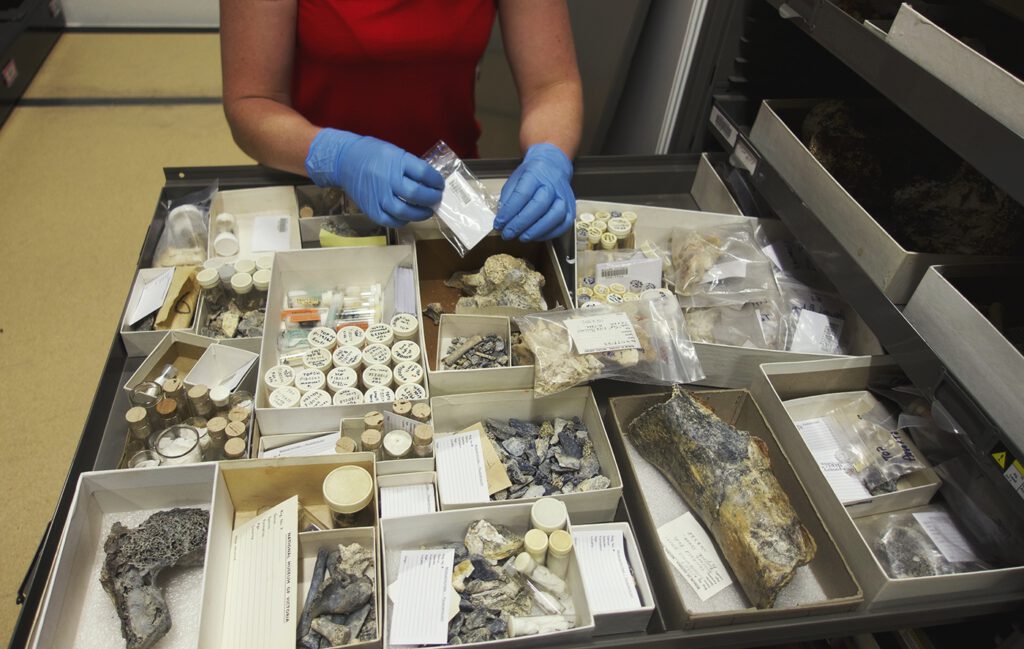
Paper Giant was engaged by the Victorian government to conduct social research into how GLAM collections in Victoria are used, including who accesses them, the barriers to access that exist, and what opportunities there might be to improve access to the vast wealth of cultural heritage and scientific knowledge held in institutions.
Research at this scale regarding collections use had never been conducted before in Australia, and – to our knowledge – is the largest research project of its type ever conducted in the sector, anywhere in the world.
Large scale, mixed-methods research
We started by conducting a literature review of prior studies nationally and internationally. Then, over the course of six months, we interviewed 32 collections managers (such as librarians and archivists), ran a statewide survey into collections use, interviewed over 50 users of collections, and analysed the existing (though limited) usage statistics of more than 30 institutions.
Our mixed-methods approach was unusual for the sector, which tends to rely on surveys for data collection. By supplementing survey and quantitative data with qualitative research methods such as interviews, we were able to deeply understand and subsequently communicate rich and complex stories of use and value that cannot be captured in numbers or statistics.
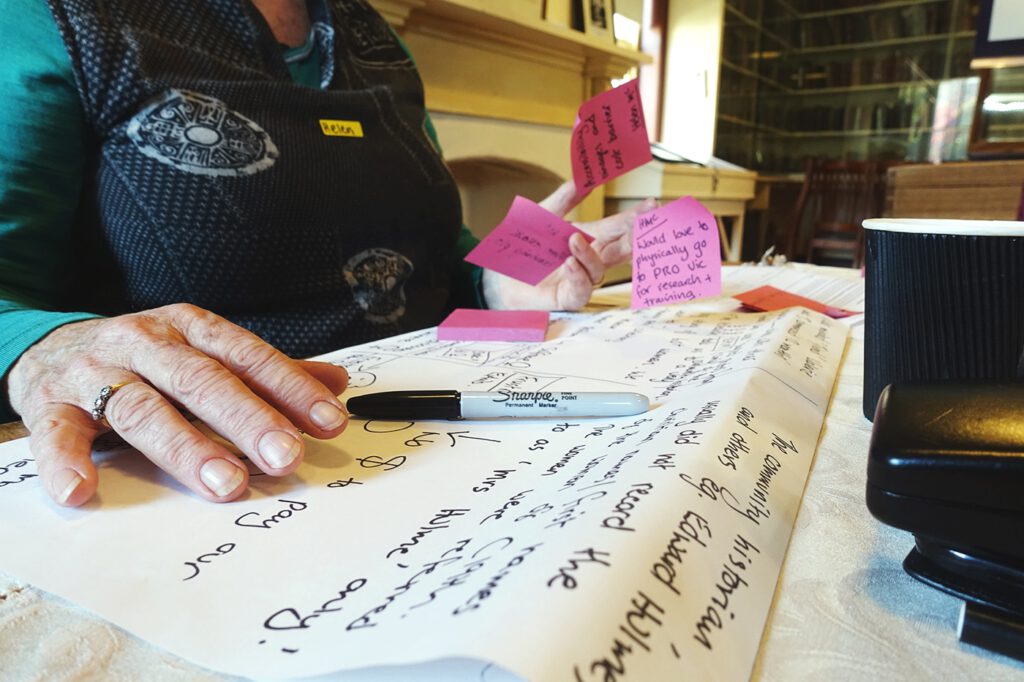
Through this work we uncovered a diverse array of barriers to collections access and use – from the systemic (the whole sector is poorly funded) to the individual (some collections have limited viewing space which makes it hard to see certain items), as well as specific physical, digital, geographic and organisational barriers.
We also uncovered amazing success stories and touching case-studies that highlighted the value to individuals across generations and communities across geographic boundaries. That demonstrated how collections can be used for discovery, knowledge and creation of novels and artworks; used to build social connections and belonging in regional communities; or even re-shape careers, change personal connections to family and place, or provide incalculable personal or professional value.
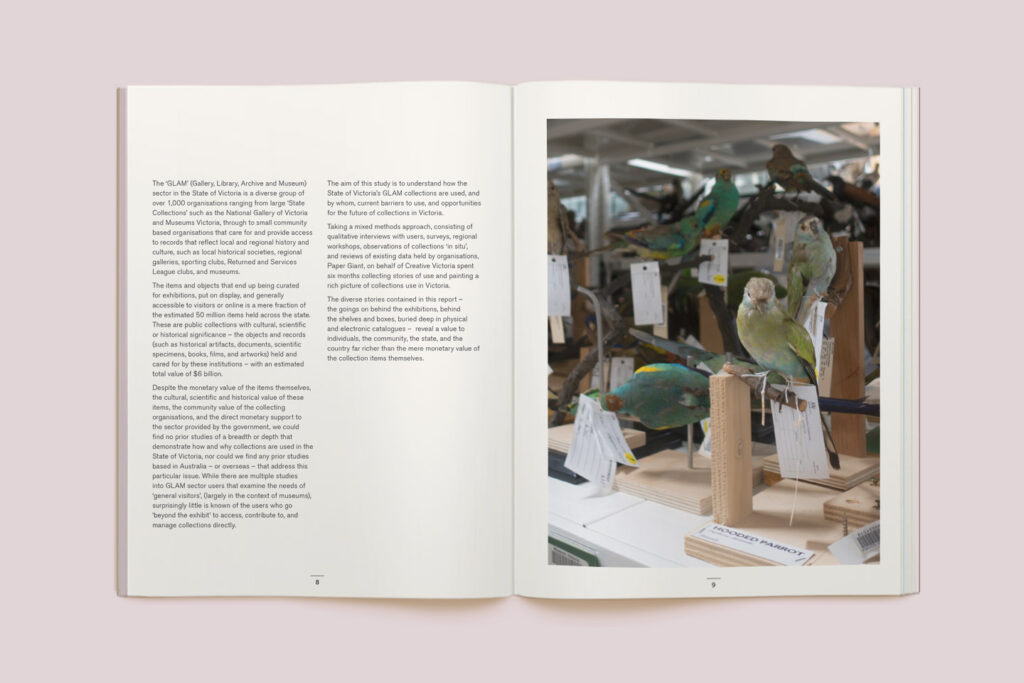
A user-centred framework for the future of collections
Through our research, we identified four main types of collection use that require different kinds of access and support: research and reference, experiential viewing, display and interpretation, and collecting and preserving.
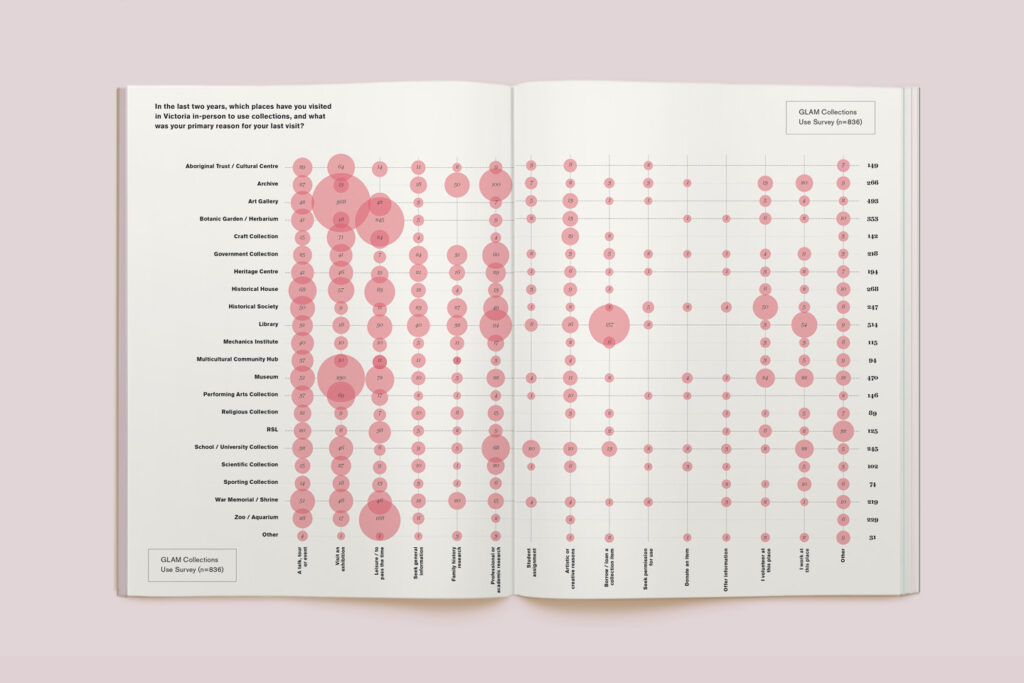
We also discovered that individual relationships to collections mattered more than anything else when determining use and access, and created a tool for strategic planning that helps collections owners plan for different collections users. This tool explained 8 descriptors, which became important facets of a user type: personal or professional, internal (organisation) or external (public), novice or expert, and accessor or contributor.
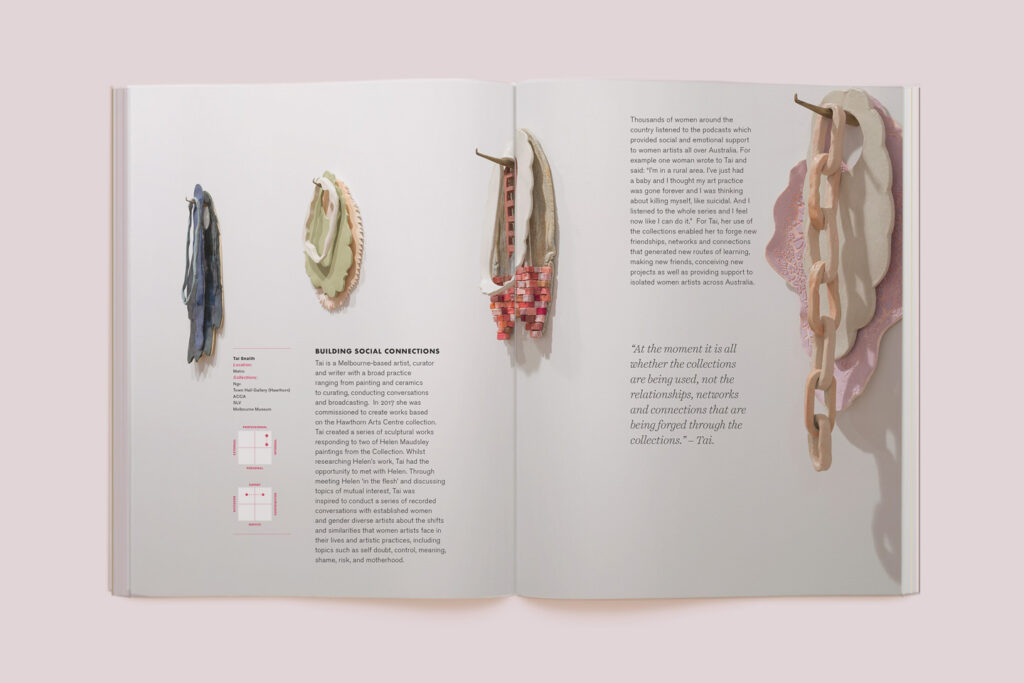
Using these 8 descriptors, we developed a new user-centred framework for the GLAM sector to segment user types, designed specifically to help GLAM institutions identify the primary needs of different users, and as a tool to help institutions improve access to collections.
The report, and the framework that we developed, will help ensure that Victoria’s amazing cultural resources are accessible to everyone and are preserved and maintained for future generations.